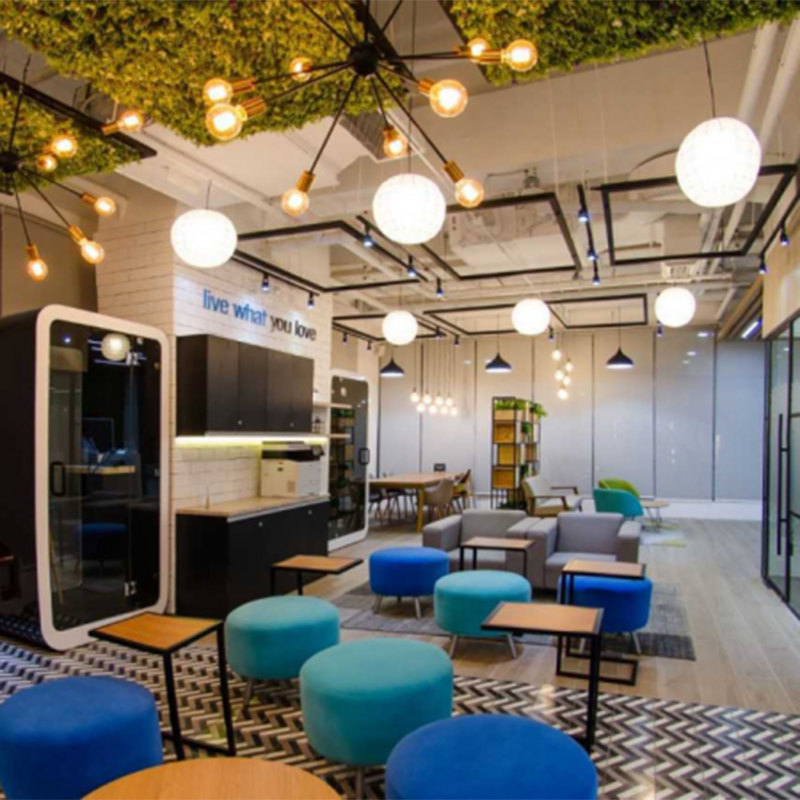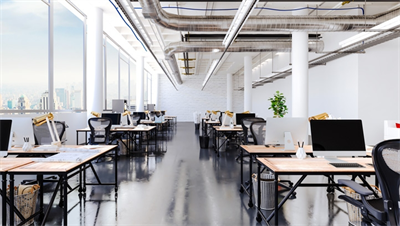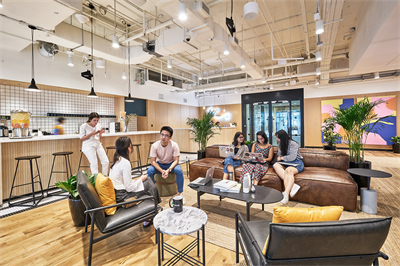There’s been a lot of dialogue on what the future workplace is going to look like following the recent world events. However, long before COVID changed our working life so dramatically, the tradition was taking a back seat in favour of newer, more flexible ways of working. And employers are quickly realising the benefits of flexible working, that will last longer than the pandemic that brought the changes about in the first place.
Employees having the option of working at home and around their personal lives is just one aspect of creating a flexible working environment. Yes, work-life balance is important, but we’re talking less about hours and more about the physical space in which employees thrive when they do come together.
A flexible workspace is one that can create dynamic environments for teams to provide versatility and flexibility. You’ll find all the usual elements such as desks, chairs, phones, computers— but the idea is to change and accommodate how people like to work on any given day.
The modern and flexible workspace is a more fluid version of the traditional workplace, which can include the following:
-
Open plan concepts. Flexible workspaces need a baseline open concept to be successful since the whole point is to lack physical barriers. Open concept plans also offer the best square-foot-per-occupant efficiency.
-
Breakout spaces. Despite the collaborative nature of flexispace, employees need opportunities to work in smaller groups or by themselves. They’re a quick departure from the generally noisy, fast-paced, group environment. Ensure your breakout spaces are designed comfortably, with furnishings and seating options that emulate people’s own homes.
-
Quiet areas. Quiet provides opportunities for privacy and focused thinking. Quiet zones are a must-have to offset the busy hum of open spaces. Just make sure they’re not constantly locked down by the same employees or groups.
-
Touchpoints. These are overflow areas to accommodate additional staff, temp workers, and on-site partners. They ensure a fixed space to work, without relegating employees to an under-utilised area or subjecting them to constant shuffling as the workplace adapts.
-
Shared resources. Regardless of who’s working where everyone needs access to shared resources. The copy machine, break room, and other general-use office assets must be accessible to everyone—regardless of how they’re working.
Together, these core elements make up flexible workspaces. They offer enough space for everyone to work in whatever capacity they need and put the choice back into the hands of your staff.
The benefits of flexibility
Flexibility induces adaptability. Given a diverse range of workspace types, employees gravitate to the kind of space they need on any given day, for any given project. They meet for a project kick-off in a collaborative space, then break off with their team to plan the details. The rest of the week involves bouncing back and forth between breakout spaces, quiet zones, and collaborative spaces.
Flexible workplaces offer a happy medium between a single concept and remote work and puts all essential workplace types in one office or area, letting employees decide how they want to work. This can be empowering and enjoyable - employees will see their workplace as an extension of their own home where freedom of movement is allowed and encouraged.
This movement is not just good for our bodies as we’re not sitting all day in one place; it encourages conversation and communication, which ultimately increases productivity.
How to introduce workplace flexibility
The philosophy of flexible spaces isn’t defined by the space itself—it’s realised by utilising it. It’s not enough to reorganise the furniture in an office and call it “flexible.” Employees must learn to use the space they need within the context of a flexible workplace. The furniture and equipment in each space will vary depending on the requirements; for example, you can have sit-to-stand desks in designated work areas, soft seating in collaborative spaces and communal tables in breakout rooms.
The best way to create a flexible workplace culture is to delineate different workspaces and explain them to employees clearly. Then, let them realise the benefits on their own. Your workforce is smart and will quickly understand why it’s better to collaborate in an open office area and work by themselves in a breakout space or at a touchpoint. It’ll take time to adjust to the versatility, but employees will realise its benefits as the workplace naturally conforms to their habits and tasks.
Workplace professionals should include a variety of spaces in a flexible office—or at the very least, agile spaces capable of conforming to different expectations. Successful flexible work environments are those that don’t leave employees looking for a place to work; they simply provide it. You may find that once this is implemented, your staff becomes more engaged, keen to collaborate and more at home in their work environment.
For more tips on how to transform your workplace to inspire and boost productivity, contact the Modern Office team to discuss your requirements now.
A typical n3 Member saves 15% with Modern Office.





